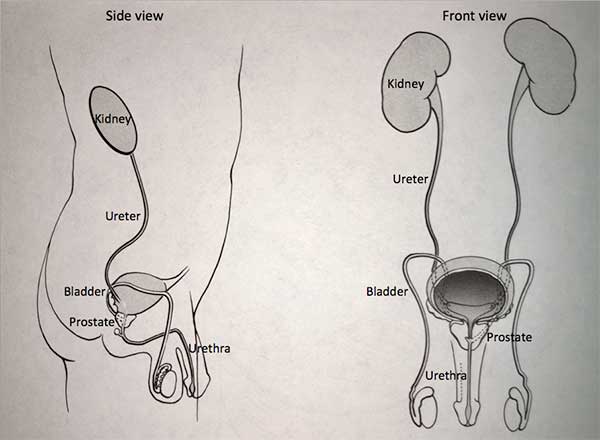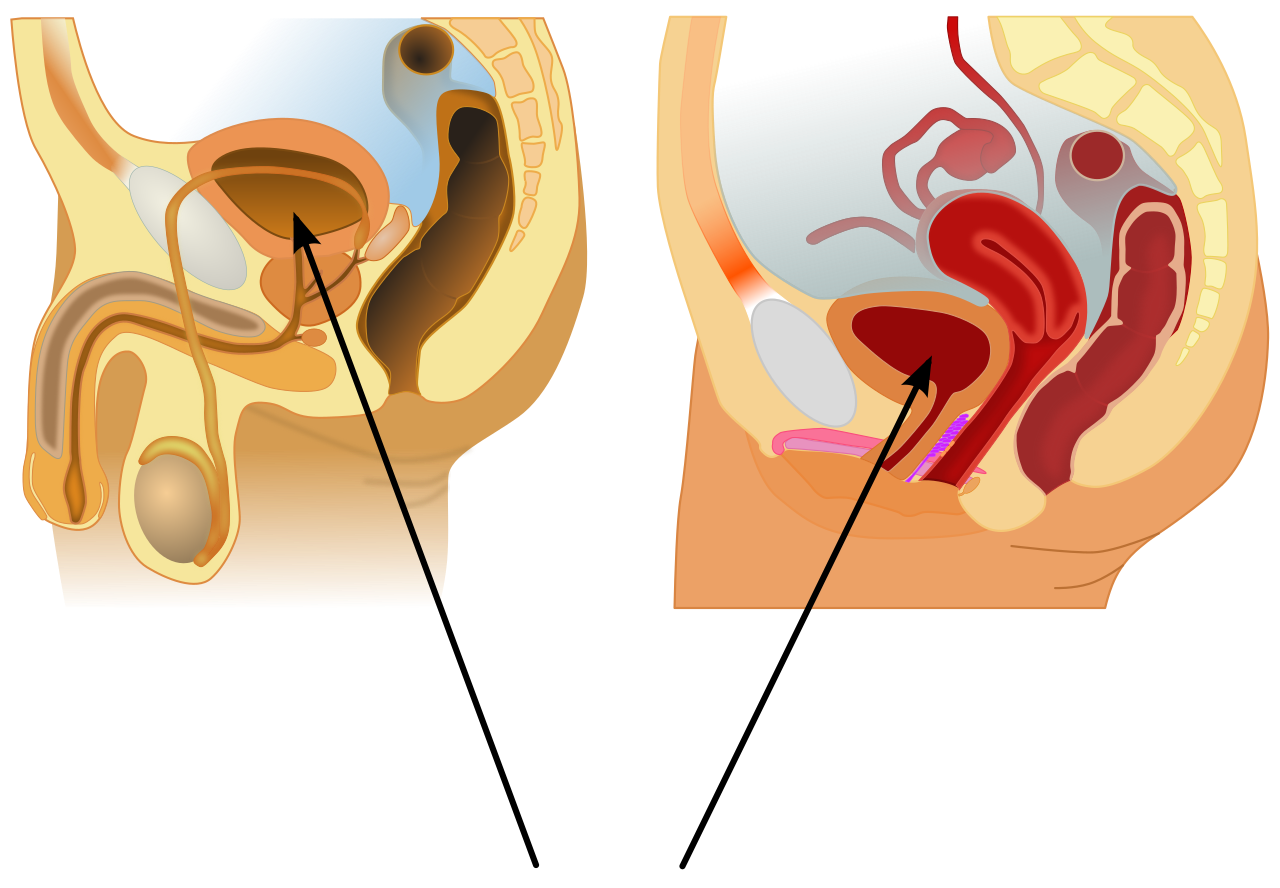Pediatric Voiding Dysfunction
What is voiding dysfunction?
A variety of voiding problems can occur in children. The term dysfunctional voiding is used to describe this group of disorders of difficulty with urination.
The urinary tract begins with the kidneys. The kidneys, one on each side, sit high in the upper abdomen partially underneath the rib cage. They filter the blood to extract excess waste products and fluid to form the urine. Urine, once formed in the kidneys, travels through a tube on each side, the ureter, down to the bladder. Urine is constantly being made by the kidneys and transported through the ureters into the bladder. The bladder stores urine until full and then empties to the outside through the urethra. The urinary system is the same in both men and women from the kidneys to the bladder.

What are symptoms of voiding dysfunction?
Symptoms of dysfunctional voiding may include any combination of the follow wing: daytime leaking, increased urinary frequency (the sense of the need to urinate more often), urgency (the sense of the need to “get there right away”), decreased frequency of voiding (voiding only one to three times per day), lower abdominal pain, and burning with urination.
What are causes of voiding dysfunction?
There are multiple different causes for dysfunctional voiding, some of which include neurologic change, learned behavior patterns, and bladder exposure to irritants.
Changes in voiding pattern may be a result of a neurological problem, which can occur if there is an abnormality in the communication between the urinary control center in the brain and the bladder, or in the nerves that regulate bladder function. Voiding difficulty may also develop due to learned behavior patterns. Some children may hold their urine and postpone voiding (as can occur if they are distracted during the day, or “too busy”). Others may teach themselves to void every time they feel a sensation in their bladder which causes them to go to the bathroom too frequently.

Various foods can irritate the voiding sensors in the bladder, and cause a bladder spasm, which may give the sensation of the need to urinate more frequently. These include spicy foods and caffeinated or carbonated beverages.
Concentrated urine can also be a bladder irritant. For the child who does not drink enough water during the day, the concentrated urine can irritate the bladder sensors, which in turn can cause urinary frequency and urgency.
What is vaginal voiding?
Girls can also have a problem called vaginal voiding, where they notice urine that dribbles out when they stand after voiding. This may cause irritation or itching in the vaginal or anal area and may predispose to yeast infection. Vaginal voiding occurs when a girl sits back on the toilet with her feet close together on the floor. During voiding, the urine runs backward into the vagina instead of forward and out. The urine then leaks from the vaginal area when she stands after voiding. Vaginal voiding can be resolved with the following measures: pull the underwear down to the ankles, sit down closer to the edge of the toilet and keep the legs spread apart. Alternatively, the patient can also sit facing backwards on the toilet to aid with better voiding.
How is dysfunctional voiding evaluated?
Evaluation may include a renal and bladder ultra sound to exclude the presence of an underlying structural abnormality. A plain abdominal x-ray, also known as a KUB, may be done to assess for constipation, which may be associated with voiding dysfunction.
Urinalysis and urine culture may be checked to evaluate for possible urinary infection.
How is dysfunctional voiding treated?
There are various treatments for pediatric voiding dysfunction. The first step is to correct behavioral problems that might be contributing to the voiding problem. Measures include: increased fluids, timed voiding, avoidance of “holding urine”, and allowance for more time on the toilet, restriction of carbonated beverages and other bladder irritants, and measures to address constipation.
Medication
The next step may include medications to help with the symptoms. Ditropan (oxybutynin) is the most commonly used medication.
It reduces unwanted bladder spasms, which then allows the bladder to hold more urine, which then causes a decrease in the amount of urinary frequency and urgency. The most common side effects experienced by patients are dry mouth and constipation
Print PageContact us to request an appointment or ask a question. We're here for you.




